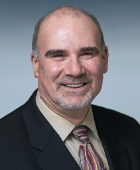In the Name of … Consultation-Liaison Psychiatry

One of the pleasures of sitting at the helm of our great organization is exposure to the tremendous breadth and depth of activity in which our members engage. The APA Council on Psychosomatic Medicine has been actively engaged with a major change in the identity of its subpecialty. For this column, I have invited our APA council chair, Dr. David Gitlin, to recount the history and context of this historic change. —Anita Everett, M.D.
By David Gitlin, M.D.
A major change has occurred for the subspecialty of psychosomatic medicine: the field has been renamed consultation-liaison psychiatry.
This past spring, the American Board of Psychiatry and Neurology (ABPN) recommended to the American Board of Medical Specialties (ABMS), the organization that has oversight over accreditation of medical specialties and subspecialties, that it approve changing the name psychosomatic medicine to consultation-liaison psychiatry. The ABMS formally approved the change in October. This was followed by a vote of the membership of the Academy of Psychosomatic Medicine (APM, the primary psychiatrist organization for the field) to change its name to the Academy of Consultation-Liaison Psychiatry.
This change did not happen suddenly. The development of the field of consultation-liaison psychiatry (C-L) goes back to the 1950s and 1960s, with the work of Weissman, Kornfeld, and Hackett, among other psychiatrists studying the interface between psychiatric presentations and medical illness. Rapidly, the role of the psychiatric consultant in medical settings became increasingly valuable, and by the 1970s C-L psychiatry became a required rotation in all psychiatry residency programs. By the 1990s, there were nearly 50 fellowship programs in C-L psychiatry. These programs provided psychiatrists with additional expertise in the psychiatric care of patients with the full spectrum of medical illnesses, including those related to transplantation, oncology, cardiology, HIV, OB/GYN, and pediatrics, to name but a few. With this strong emphasis on medical illnesses and setting, C-L psychiatry has led the way in the development of integrated and collaborative care research and program development.

David Gitlin, M.D., is vice chair for clinical programs and chief of the Division of Medical Psychiatry at Brigham and Women's/Faulkner Hospitals and an assistant professor of psychiatry at Harvard Medical School.
The development of the field led to the APM’s efforts in the early 1990s to attain subspecialty status, with the proposed name of consultation-liaison psychiatry. At that time, the ABMS imposed a moratorium on all new subspecialties in an effort to promote primary care specialties. In 2000, after the moratorium was lifted, the APM reapplied for subspecialty status. While the ABMS agreed that the field met the criteria for subspecialization, the name of consultation-liaison psychiatry was not approved, in part over the concern that all psychiatrists perform consultations. The ABMS suggested the name of psychosomatic medicine, in part due to its use in the names of the major organizations and journals in the field. In 2003 the new subspecialty was created.
While the field has flourished since then—with over 70 accredited fellows graduating each year and the APM growing to over 1,400 members—many in the field have expressed concern over the name of psychosomatic medicine. Although the term is popular in Europe, where many departments of psychosomatic medicine exist independent of psychiatry departments and the term has a robust history, in the United States the word “psychosomatic” is poorly understood. Also, the word often carries a negative connotation, both for other physicians and the lay public, who understand “psychosomatic” to imply that one’s physical symptoms have an underlying psychological cause.
Surveys of nonpsychiatric physicians and patients have revealed limited understanding of the specific areas of expertise for these psychiatrists. Most other psychiatrists know this area as consultation-liaison psychiatry, having completed required rotations in the specialty during their residency.
Fortunately, developments in the past two decades have reinforced the understanding of the consultation-liaison subspecialty within psychiatry, and greater acceptance of this name among the leadership of APA has catalyzed the movement to return to this term.
With the encouragement of APA Chief Executive Officer and Medical Director Saul Levin, M.D., M.P.A., and APA President Anita Everett, M.D., APM and the APA Council on Psychosomatic Medicine successfully led the process to change the name.
Consultation-liaison psychiatry, like other accredited subspecialties in psychiatry, including child and adolescent psychiatry, geriatric psychiatry, addiction psychiatry, and forensic psychiatry, consolidates knowledge and scholarship in clinical practice, education, and research, all of which further support the broad expertise of the entire field. We hope that the establishment of this new name will provide an opportunity to educate other physicians and patients on the many aspects of consultation-liaison psychiatry and that this change will help lead to further appreciation of the scope and importance of psychiatry in general. ■
References
Weissman AD, Hackett TP: Psychosis after eye surgery—establishment of a specific doctor-patient relationship in prevention and treatment of black patch delirium. N Engl J Med 1958; 258:1284–1289
Kornfeld DS, Zimberg S, Malm JR: Psychiatric complications of open-heart surgery. N Engl J Med 1965; 273:287–292
Hackett TP, Cassem NH, Wishnie HR: The coronary care unit: an appraisal of its psychological hazards. N Engl J Med 1968; 279: 1365–1370
Katon WJ, Lin EHB, Von Korff M, et al: Collaborative Care for Patients with Depression and Chronic Illnesses. N Engl J Med 2010; 363:2611-2620
Unützer J, Katon WJ, Callahan CM, et al, for the IMPACT Investigators: Collaborative Care Management of Late-Life Depression in the Primary Care Setting: A Randomized Controlled Trial. JAMA. 2002;288(22):2836-2845.
Gitlin, David F; Levenson, James L; Lyketsos, Constantine G. Academic Psychiatry; New York 2004: 28: 4-11.
Diefenbacher A. Psychiatry and psychosomatic medicine in Germany: lessons to be learned? Aust N Z J Psychiatry. 2005 Sep;39(9):782-94.



